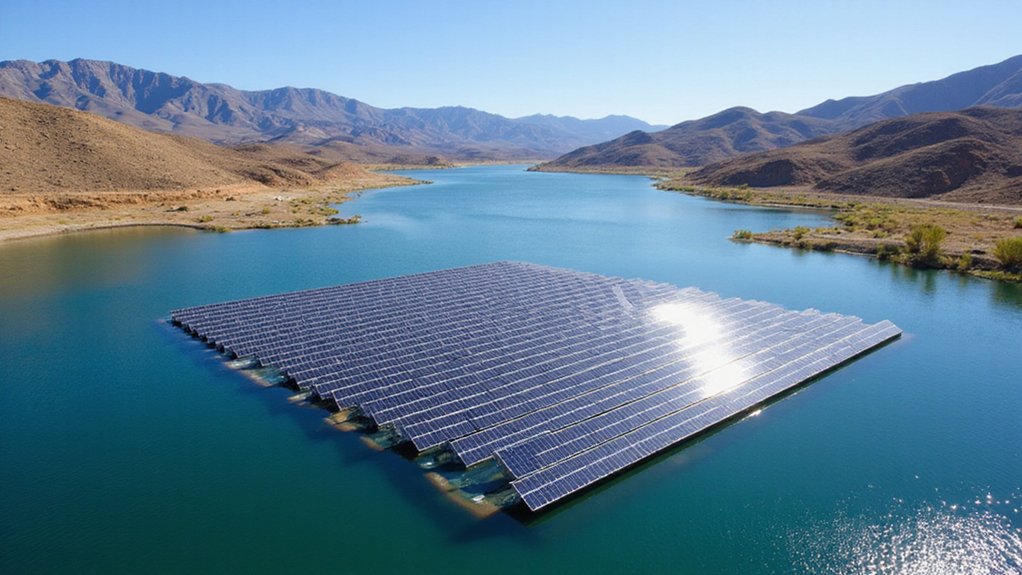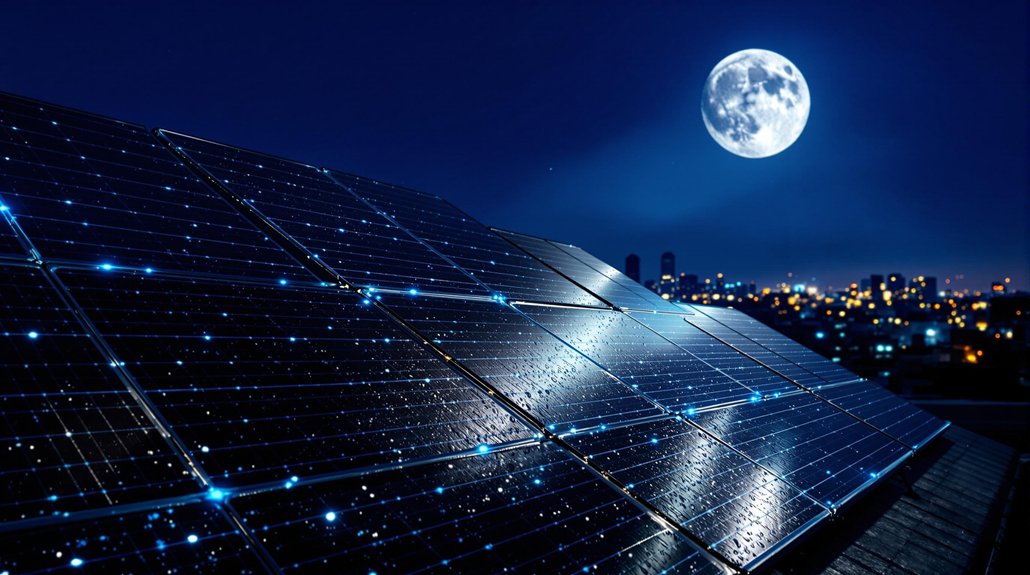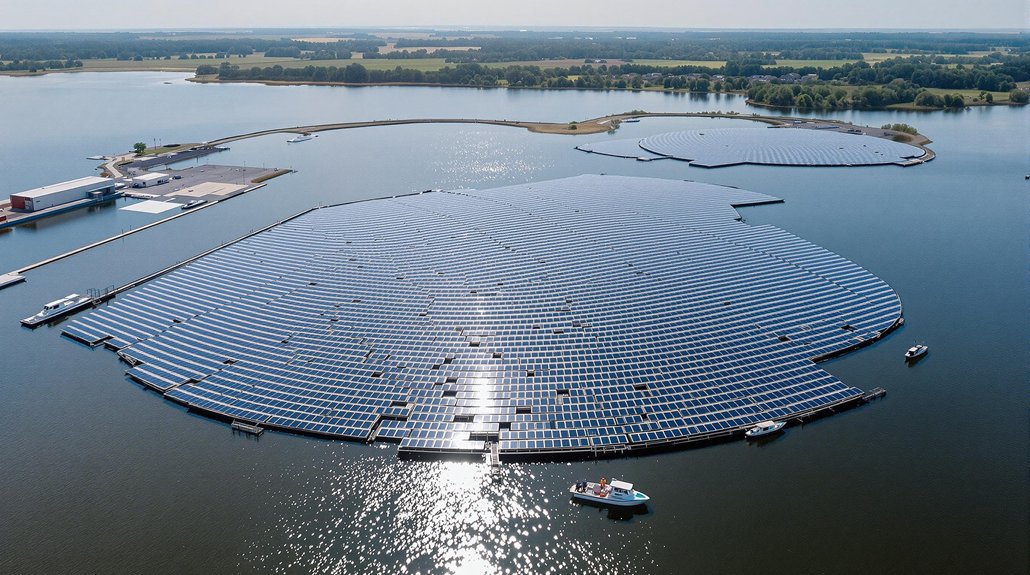California’s floating solar transformation is gaining momentum across the state’s water bodies. These innovative installations float on reservoirs and canals, generating clean electricity while reducing evaporation and algae growth. With 149 megawatts of distributed capacity already installed, California ranks among top states for floating solar potential. The panels achieve 5-15% higher efficiency than land-based systems due to water cooling. The state’s ambitious climate goals stand to benefit substantially from this emerging technology.
As California continues to lead the nation in renewable energy adoption, a new solar transformation is taking place on the state’s vast network of reservoirs and water bodies. The state ranks among the top in the nation for floating solar potential, with experts suggesting these installations could help California reach its ambitious climate goals.
California’s extensive reservoir system creates an ideal environment for floating solar panels. Recent studies from the National Renewable Energy Laboratory (NREL) show that U.S. reservoirs could generate up to 1,476 terawatt hours of energy from floating solar, with a significant portion of this potential in California.
California’s vast reservoir network offers perfect conditions for floating solar, representing a substantial portion of the nation’s potential 1,476 TWh capacity.
The state already had 149 megawatts of distributed solar capacity installed by January 2025. California’s commitment to renewable energy extends to low-income communities, with 13,778 solar projects supporting these populations.
Floating solar offers unique benefits beyond clean energy production. The panels shade water surfaces, reducing evaporation from reservoirs – a vital advantage in drought-prone California. They also help control algae growth while avoiding land use conflicts that traditional solar farms often face.
What makes floating solar especially effective is the natural cooling effect of water on the panels. This cooling can increase panel efficiency compared to land-based systems. These innovative installations can achieve 5-15% higher efficiency due to the natural cooling effects of water bodies.
The global floating solar market is growing steadily at 1.4% annually through 2032. By 2022, global capacity had already reached over 13,000 MW with an impressive 142% annualized growth rate.
NREL researchers Evan Rosenlieb and Marie Rivers have mapped California’s floating solar potential, noting that developable reservoir areas range from 2% to 81% of surface area. Each site requires specific evaluation considering factors like reservoir floor slope and minimum water volume.
While California has impressive potential for floating solar, challenges remain. Not all technically suitable locations can be developed due to wildlife considerations and human activities. The City of Healdsburg completed a 4.78 MW array at a wastewater facility, demonstrating the viability of such installations.
However, NREL experts suggest that developing even 10% of identified potential would make a significant impact on reaching California’s clean energy goals. Following the green revolution trend seen worldwide, these floating installations represent California’s commitment to sustainable energy practices that preserve both land and water resources.
References
- https://www.publicpower.org/periodical/article/new-study-finds-significant-potential-add-floating-solar-panels-us-reservoirs
- https://environmentamerica.org/center/articles/the-growing-market-for-floating-solar-proves-solars-adaptability/
- https://www.californiadgstats.ca.gov
- https://www.canarymedia.com/articles/solar/floating-solar-has-massive-potential-in-the-us
- https://mercomindia.com/floating-solar-us-reservoirs-nrel








